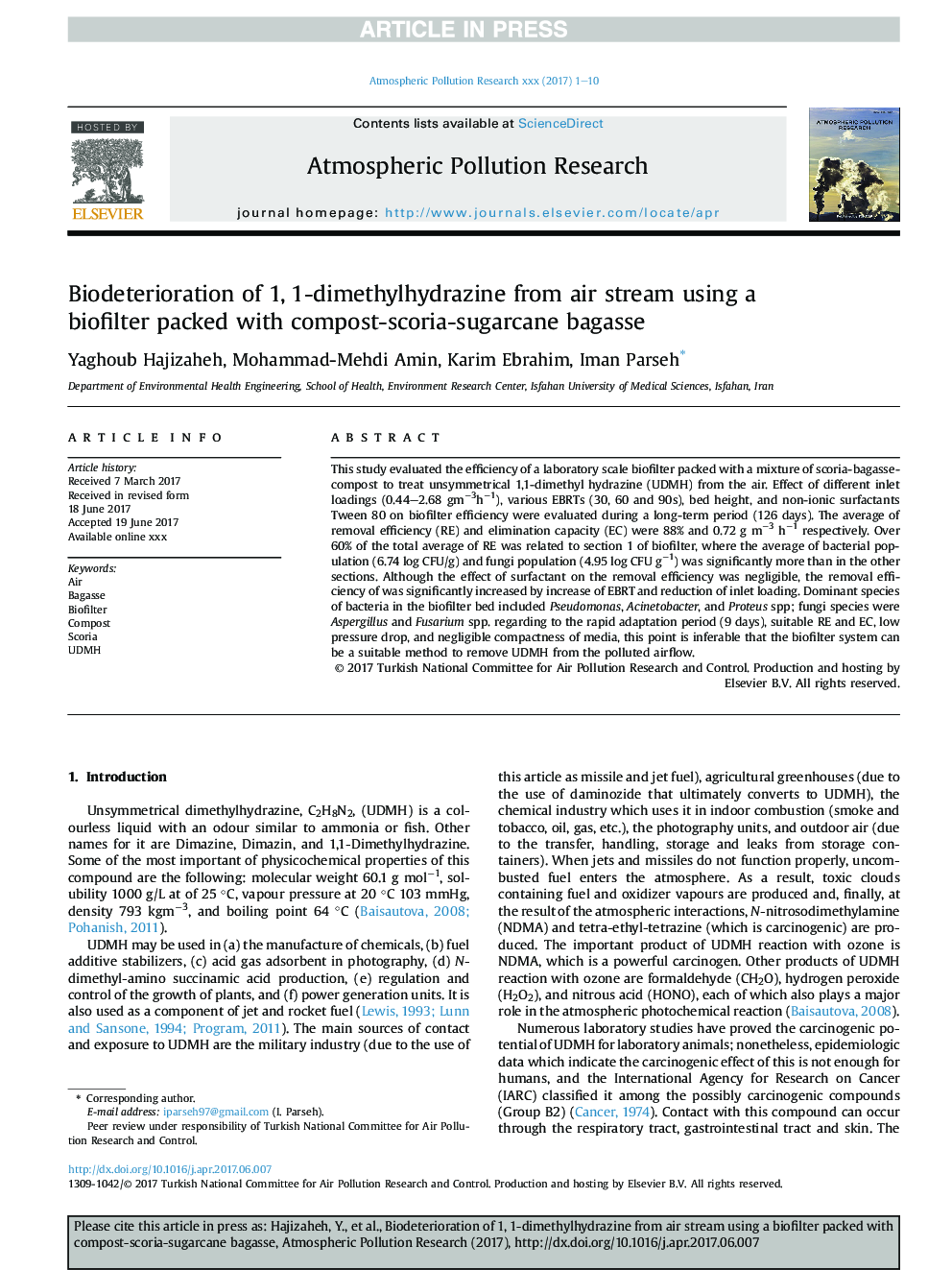| Article ID | Journal | Published Year | Pages | File Type |
|---|---|---|---|---|
| 8862668 | Atmospheric Pollution Research | 2018 | 10 Pages |
Abstract
This study evaluated the efficiency of a laboratory scale biofilter packed with a mixture of scoria-bagasse-compost to treat unsymmetrical 1,1-dimethyl hydrazine (UDMH) from the air. Effect of different inlet loadings (0.44-2.68 gmâ3hâ1), various EBRTs (30, 60 and 90s), bed height, and non-ionic surfactants Tween 80 on biofilter efficiency were evaluated during a long-term period (126 days). The average of removal efficiency (RE) and elimination capacity (EC) were 88% and 0.72 g mâ3 hâ1 respectively. Over 60% of the total average of RE was related to section 1 of biofilter, where the average of bacterial population (6.74 log CFU/g) and fungi population (4.95 log CFU gâ1) was significantly more than in the other sections. Although the effect of surfactant on the removal efficiency was negligible, the removal efficiency of was significantly increased by increase of EBRT and reduction of inlet loading. Dominant species of bacteria in the biofilter bed included Pseudomonas, Acinetobacter, and Proteus spp; fungi species were Aspergillus and Fusarium spp. regarding to the rapid adaptation period (9 days), suitable RE and EC, low pressure drop, and negligible compactness of media, this point is inferable that the biofilter system can be a suitable method to remove UDMH from the polluted airflow.
Related Topics
Physical Sciences and Engineering
Earth and Planetary Sciences
Atmospheric Science
Authors
Yaghoub Hajizadeh, Mohammad-Mehdi Amin, Karim Ebrahim, Iman Parseh,
